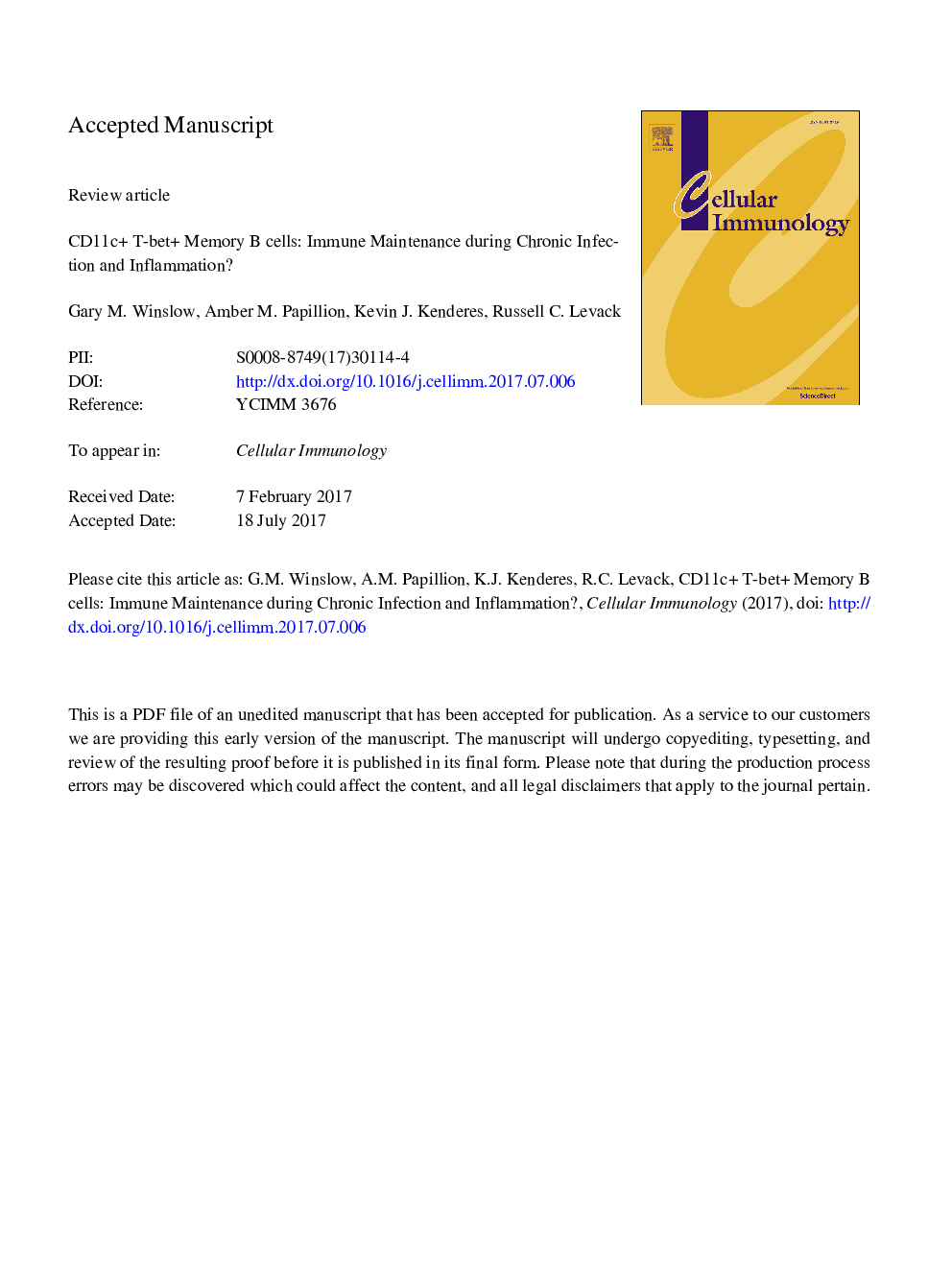| Article ID | Journal | Published Year | Pages | File Type |
|---|---|---|---|---|
| 8463636 | Cellular Immunology | 2017 | 41 Pages |
Abstract
CD11c+ T-bet+ B cells have now been detected and characterized in different experimental and clinical settings, in both mice and humans. Whether such cells are monolithic, or define subsets of B cells with different functions is not yet known. Our studies have identified CD11c+ IgM+ CD19hi splenic IgM memory B cells that appear at approximately three weeks post-ehrlichial infection, and persist indefinitely, during low-level chronic infection. Although the CD11c+ T-bet+ B cells we have described are distinct, they appear to share many features with similar cells detected under diverse conditions, including viral infections, aging, and autoimmunity. We propose that CD11c+ T-bet+ B cells as a group share characteristics of memory B cells that are maintained under conditions of inflammation and/or low-level chronic antigen stimulation. In some cases, these cells may be advantageous, by providing immunity to re-infection, but in others may be deleterious, by contributing to aged-associated autoimmune responses.
Keywords
Related Topics
Life Sciences
Biochemistry, Genetics and Molecular Biology
Cell Biology
Authors
Gary M. Winslow, Amber M. Papillion, Kevin J. Kenderes, Russell C. Levack,
